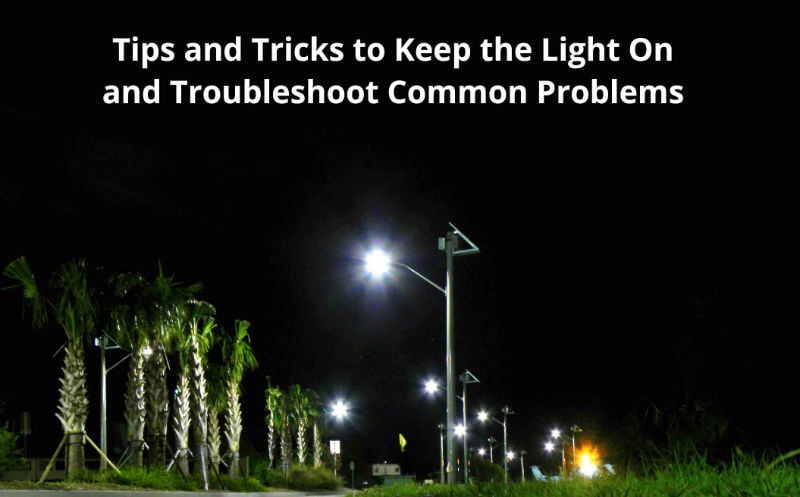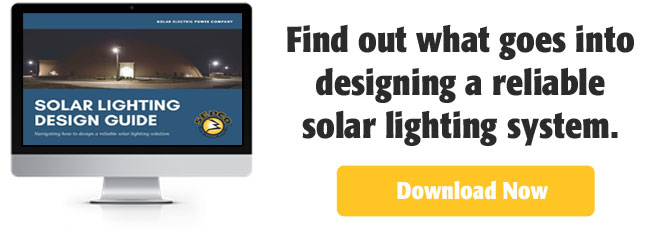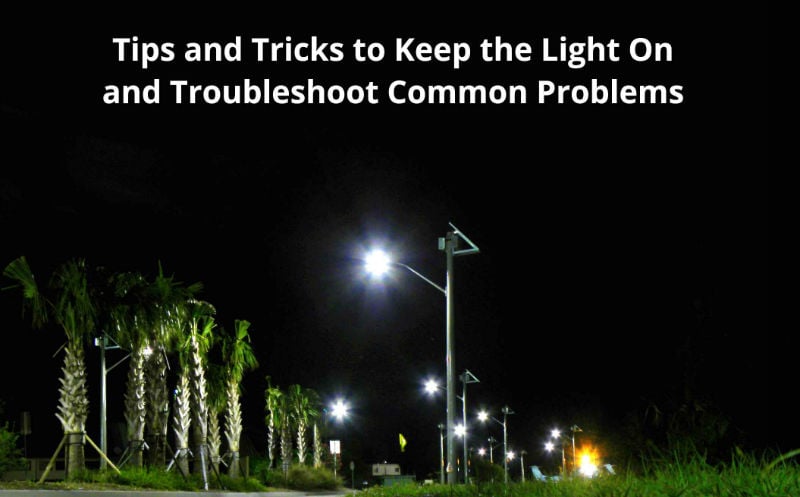
Solar outdoor lighting is a great way to showcase your green initiative and provide great lighting in all types of areas, but what do you do when they malfunction and don’t come on when expected? There are a few tips and tricks to troubleshooting solar lights that help you determine what the issue is. Here are a few of the most common issues that work for both commercial and residential solar light systems and how you can determine what the issue may be.
1. Are they coming on, but turning off before they are supposed to?
Sometimes your lights just don’t last as long as they once did and this is typically caused by batteries dying. With commercial solar lights, the batteries should last five to seven years if properly sized for the application. If it is coming up to that point, it is time to contact the manufacturer and get replacement batteries. Small home solar lights have batteries as well; however, these typically last a much shorter time and can easily be replaced by purchasing rechargeable batteries from your local store. Remember, batteries only have so many cycles before they just go bad and need replacing.
Another issue could be the solar panel is dirty and not producing the required power to charge the batteries fully. This is a simple fix and one of the easiest things to check. Look at the solar panel and see if it is dirty, then follow steps on cleaning the solar panel and see if that helps the system function properly. This doesn’t need to happen often, especially if your panels are at an angle and it rains often enough to keep dusk and grime from building up on the panels.
Finally, are the panels shaded by something that has grown in the way? Trees and surrounding landscaping grows over time and can cause shading on the panels, not allowing them to charge the batteries fully. Make sure there is nothing taller than the panels near the south of the system’s installation. Solar panels need direct sunlight all day and even the smallest amount of shade changes the output of the solar panels.
2. Are the lights not coming on at all?
This could be one of two issues if the lights worked at one point; the battery as above, the lamp or a blown fuse. If the battery is what you think is the problem, replace them. If it isn’t the battery, it is more than likely the lamp. A lamp only has a certain life span and they need to be changed out every so often, just like a light bulb in your home. There are exceptions to this rule such as LED technology. Most LEDs last 15+ years; however, if you are using CFL, HPS, LPS or metal halide, they can die much sooner. Determine what type of lamp is operated by your solar lighting system and figure out if it is time to replace the lamp or not. One suggestion we would give is if it is time to change out your lamps, look into utilizing a LED fixture. Not only will they last longer, they will give you more light for the same power draw, a complete win-win.
The last thing that could be going wrong seems like the simplest thing, but it can render your system completely dead. A blown fuse will terminate all power from flowing through your system and not allow the light to come on at all; however, it is a simple replacement with a new fuse the proper size and your system will be up and running immediately. All SEPCO systems come with an extra fuse in the battery box just in case of this situation.
Now that you know the basics to troubleshooting your solar lights, you should easily be able to figure out what is wrong and how to fix it. Need additional troubleshooting help? Contact your manufacturer for additional support.



